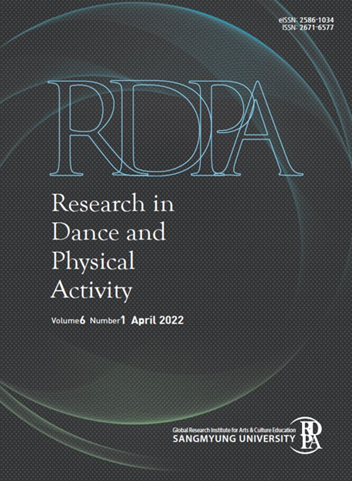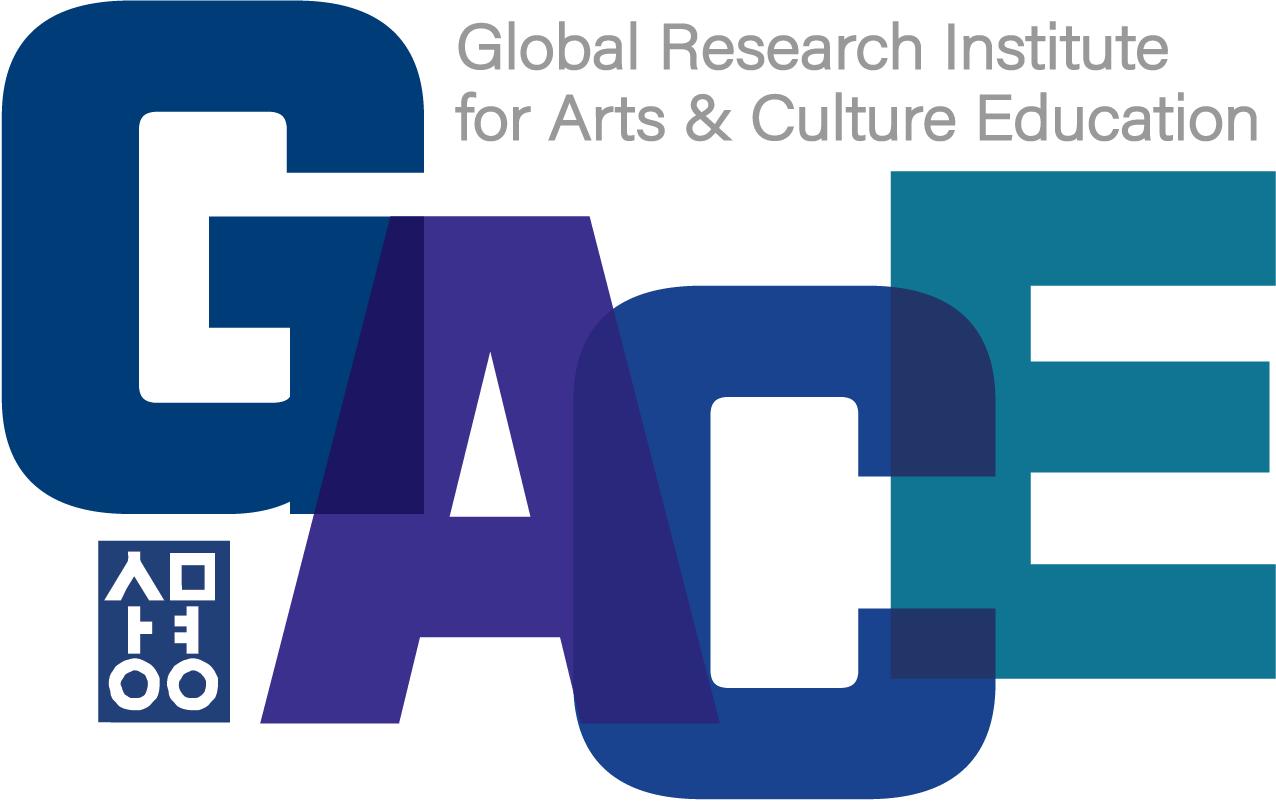
2017년에 창간된 RDPA는 무용과 신체활동 관련 분야의 연구 성과를 국제적으로 발표하며, 다양한 국가와 문화적 배경을 가진 학자들과 현장 전문가들이 학술적으로 교류하고 협업할 수 있는 공간을 마련하는 것을 목표로 하고 있습니다.
RDPA는 2021년 한국연구재단 KCI 등재지로 선정되어 전문적인 학술지로서의 위상을 확립하였으며, 향후 국제적 수준의 우수 학술지로 성장하기 위해 지속적으로 노력하고 있습니다.
■ 연구 목표와 범위
RDPA는 무용과 신체활동 분야에서 학문적·현장 지향적 성과의 발전을 도모하고, 이와 관련된 비판적이고 창의적인 논의와 담론을 활성화하는 것을 목표로 합니다.
본 학술지는 무용과 신체활동에 관련된 다양한 이론과 방법론의 적용을 포괄적으로 수용하며, 다학제적이고 융합적인 연구 접근을 장려합니다. 이를 통해 해당 분야의 풍부한 학문적 지형을 조망하고, 이론과 실천 간의 유의미한 연결을 추구합니다. 또한, RDPA는 경험이 풍부한 연구자는 물론, 신진 연구자들에게도 연구 성과를 공유할 수 있는 기회를 제공하며, 무용과 신체활동에 수반되는 다양한 사회·문화적 그리고 교육적 이슈를 폭넓게 다룹니다.
나아가, 다양한 배경을 지닌 학자들이 활발히 교류하고 협업할 수 있는 국제적 학술 플랫폼으로서의 장을 제공합니다.
RDPA의 연구 범위는 다음과 같습니다.
① 무용 창작 및 안무학 연구(Choreography & Choreology)
: 무용 작품의 창작 과정, 안무 기법, 스타일, 신체적 표현을 분석하고 탐구합니다.
② 무용 및 신체활동의 역사적, 철학적, 미학적 연구(History & Philosophy / Aesthetics)
: 무용 및 신체활동의 역사적 발전, 문화적 변천사, 철학적 논의와 미학적 가치를 다룹니다.
③ 무용 및 신체활동 관련 산업 경영 연구(Management)
: 무용 및 신체활동 관련 단체 및 기관 운영, 프로그램 기획, 관련 산업의 경영 전략 분석 등을 다룹니다.
④ 무용 및 신체활동의 사회학적, 정책학적 연구(Sociology & Policy)
: 무용 및 신체활동을 사회학적 및 정책학적 관점에서 탐구하는 연구를 다룹니다. 사회문화적 및 제도적 맥락 속에서 무용과 신체활동이 갖는 의미와 기능을 비판적으로 분석하고, 젠더, 계층, 정체성, 교육 등과의 교차적 관점을 통해 그 사회적 가치와 정책적 함의를 이론적, 실증적으로 탐구합니다.
⑤ 무용 및 신체활동의 여가학적 연구(Recreation & Leisure)
: 레크리에이션과 여가 활동의 관점에서 무용 및 신체활동의 이론적 기여와 실천적 효과를 탐구합니다.
⑥ 장애인 무용 및 신체활동 연구(Adapted Physical Activity)
: 장애인의 무용 및 신체활동 참여 촉진을 위해 그들의 특성과 요구를 고려한 실험연구 및 비실험연구를 포함합니다.
⑦ 무용 및 신체활동 심리학적 연구(Psychology)
: 무용 및 신체활동이 개인의 심리적 건강에 미치는 영향 분석과 관련 심리적 요소 연구를 포함합니다.
⑧ 무용 및 신체활동의 교육학적 연구(Educational Approach)
: 무용 및 신체활동의 교육 이론, 교수법, 교육 환경, 실천적 적용 연구 등을 다룹니다.
⑨ 건강 증진과 웰니스를 위한 무용 및 신체활동 연구(Health Promotion & Wellness)
: 무용 및 신체활동이 신체적, 정신적, 사회적 건강에 미치는 영향을 다룹니다.
⑩ 학제간 융합 접근을 통한 무용 및 신체활동 연구(Interdisciplinary Approach)
: 예술학, 체육학, 사회학, 심리학 등 다양한 학문 분야를 융합한 연구를 다룹니다.
■ 동료 심사 정책
RDPA는 모든 투고 논문에 대해 철저한 동료 심사를 진행합니다. 심사는 편집위원장의 초기 검토 후, 최소 두 명의 익명 심사위원을 통해 진행됩니다. 심사위원은 무용 및 신체활동 관련 다양한 국가의 대학과 교육·연구 기관의 교수 및 연구자로 구성됩니다.
심사위원은 무용과 신체활동에 관한 다양한 분야의 전문가로, 연구의 정확성과 신뢰성, 학문적 기여도를 평가합니다.
본 학술지의 심사 과정은 연구의 질을 보장하고, 연구 결과를 학문적으로 신뢰할 수 있도록 철저히 관리됩니다.
Research in Dance and Physical Activity (RDPA) is an international academic journal specializing in the field of arts and sport, with a particular focus on dance and physical activity. It is published three times a year (April 30, August 31, and December 31) by the Global Research Institute for Arts & Culture Education at Sangmyung University, which has been formerly designated as a university-based research institute.
Founded in 2017, RDPA aims to present research outcomes in the fields of dance and physical activity and to provide a platform for scholars from diverse countries and cultural backgrounds to engage in academic exchange and collaboration.
Since 2021, RDPA has been indexed in the Korea Citation Index (KCI) by the National Research Foundation of Korea (NRF), solidifying its status as a national level academic journal. We are committed to further developing RDPA into a globally recognized, high-quality journal.
■ Aims and Scope
Research in Dance and Physical Activity (RDPA) is committed to advancing both academic and practice-based knowledge in the fields of dance and physical activity. The journal encourages critical, creative, and interdisciplinary dialogue that explores the complex relationship between theory and practice.
RDPA welcomes diverse theoretical perspectives and methodological approaches, and seeks to foster research that spans disciplinary boundaries. By supporting contributions from both senior and early-career scholars, the journal engages with a broad range of cultural, social, and educational issues related to dance and physical activity.
As an international platform, RDPA promotes scholarly exchange and collaboration across diverse backgrounds, aiming to enrich the global discourse in this evolving field.
The research scope of RDPA includes the following areas:
① Choreography & Choreology includes studies that explore the creative process of dance works, choreographic techniques, styles, and bodily expressions.
② History & Philosophy / Aesthetics covers research on the historical development, cultural transformations, philosophical discourses, and aesthetic values of dance and physical activity.
③ Management involves research on the management of organizations, program development, and strategic analysis in dance and physical activity industries.
④ Sociology & Policy covers research that explores dance and physical activity from sociological and policy-related perspectives. It explores how dance and physical activity operate within various social and institutional contexts, examining their meanings and functions in society. Studies may address intersecting issues such as gender, class, identity, and education, offering both theoretical and empirical insights into their social significance and policy implications.
⑤ Recreation & Leisure explores the theoretical contributions and practical applications of dance and physical activity as forms of recreation and leisure.
⑥ Adapted Physical Activity contains both experimental and non-experimental research that promotes dance and physical activity of individuals with disabilities based on their unique characteristics and needs.
⑦ Psychology includes research into the psychological factors related to dance and physical activity and their impact on individual mental health and wellbeing.
⑧ Educational Approach covers research on educational theories, teaching methods, learning environments, and the practical application of dance and physical activity in educational settings.
⑨ Health Promotion & Wellness examines studies on the impact of dance and physical activity on physical, mental, and social well-being.
⑩ Interdisciplinary Approach integrates research from various disciplines, including the arts, physical education, sociology, psychology, and more, to explore dance and physical activity.
■ Peer Review Policy
RDPA follows a rigorous peer review process for all submitted articles. After an initial review by the editor, each manuscript is evaluated by at least two anonymous reviewers. Reviewers are faculty members and/or researchers from universities and/or research institutions worldwide, specializing in dance and physical activity.
Reviewers assess each submission for accuracy, reliability, and academic contribution, guaranteeing that published work meet high standards of academic excellence.
This thorough review process ensures the academic integrity and quality of the journal.
